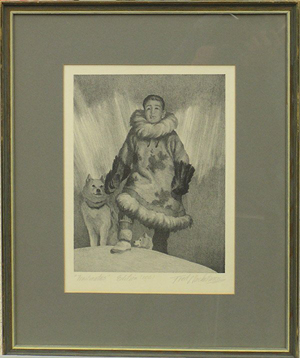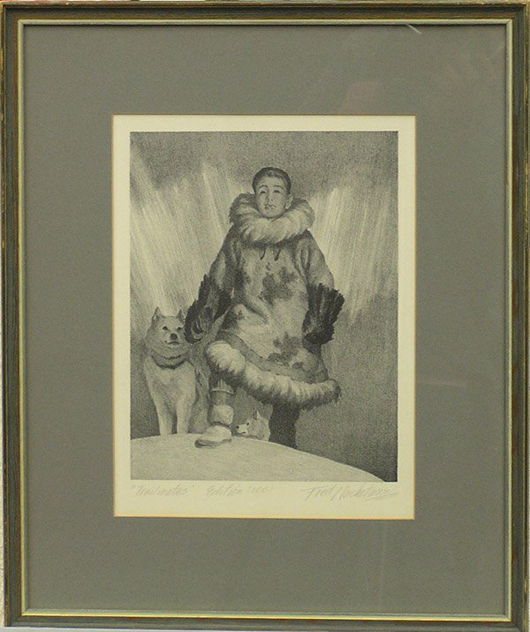
ANCHORAGE, Alaska (AP) – When artist Fred Machetanz came to Alaska in the 1930s, he saw his life’s mission spread out before him.
He would preserve for future generations images of the traditional way of life lived by Alaska Natives and others—a life that was fast disappearing even then in the Last Frontier.
Machetanz, one of Alaska’s most notable artists, took his mission seriously, making 50 stone lithographs between 1946 and 1989 showing life as it was then and sometimes still is in Alaska.
A rare, complete set of prints now is on display at the Anchorage Museum.
The black and white prints are iconic Machetanz, realistic depictions of everyday life in the Bush.
There is the Mighty Hunter, a 1960 print of a polar bear sprawled on a glacier. Accibuk, the Seal Hunter, done in 1946, depicts a Native hunter looking to the sea. Eskimo Mother, also done in 1946, shows a woman carrying her baby on her back.
Other prints show an Indian trapper holding his rifle, a pioneer setting a trap in the snow and the expectant face of Seegoo, a sled dog.
Fairbanks artist Kesler Woodward said when Machetanz came to Alaska from Ohio, he saw a world that was rapidly changing.
Machetanz came to Alaska in 1935 to visit an uncle in Unalakleet. At that time, Alaska Natives were hunting in skin boats and traveling by dog team. But Machetanz could see change on the horizon, Woodward said.
He went back to Ohio to continue his art study. He returned to Alaska after World War II, got married and began his career as an artist, devoting most of his time to painting scenes of traditional Alaska Native life.
“He was determined that he was going to preserve that for future generations,” Woodward said Friday.
Machetanz died in 2002 at the age of 94. Woodward said he painted right up until the end and remained true to his mission.
“He did exactly what he set out to do,” he said.
The exhibit runs through Feb. 26.
Copyright 2011 Associated Press. All rights reserved. This material may not be published, broadcast, rewritten, or redistributed.
AP-WF-12-02-11 2256GMT
ADDITIONAL IMAGE OF NOTE


